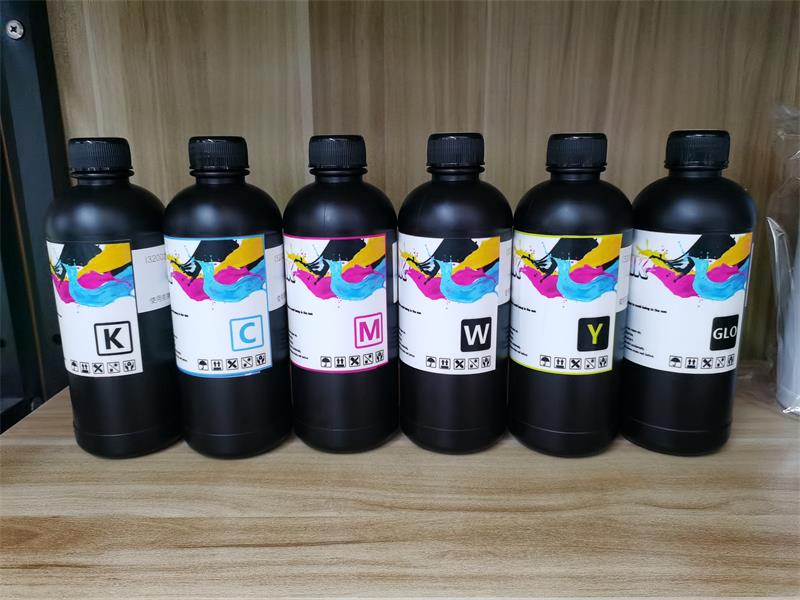UV ink is a specialized type of ink formulated to be cured by ultraviolet (UV) light. It consists of several components that work together to achieve the desired properties and characteristics. Here's an overview of the key components and their roles in UV ink composition:

1. Monomers and Oligomers: Monomers and oligomers are the primary components of UV ink. They are responsible for the formation of the ink film and play a crucial role in adhesion, flexibility, and durability. Monomers are small molecules that can combine to form larger polymer chains, while oligomers are pre-formed polymer chains. They contribute to the ink's viscosity, flow properties, and physical properties of the cured film.
2. Photoinitiators: Photoinitiators are essential components in UV ink as they initiate the curing process. When exposed to UV light, photoinitiators undergo a chemical reaction and generate free radicals or reactive species. These reactive species then initiate the polymerization reaction, leading to the solidification of the ink. Different types of photoinitiators are used depending on the specific curing requirements, such as the wavelength of UV light and curing speed.
3. Pigments and Dyes: Pigments and dyes provide color to UV ink. They are added to achieve the desired hue, tint, and opacity. Pigments are solid particles that are dispersed in the ink, while dyes are soluble colorants. UV inks often use pigments that are resistant to UV light and provide excellent color stability to prevent fading or discoloration over time.
4. Additives: Various additives are incorporated into UV ink formulation to enhance specific properties. Additives may include flow control agents, wetting agents, leveling agents, defoamers, anti-blocking agents, and more. These additives help improve ink flow, surface tension, adhesion, and other characteristics to optimize printing performance and final print quality.
5. Solvents: Unlike traditional solvent-based inks, UV inks do not contain volatile organic solvents. The liquid nature of UV inks is primarily due to the use of monomers, oligomers, and other low-viscosity components. The absence of solvents makes UV inks more environmentally friendly and reduces the emission of volatile organic compounds (VOCs).
It's important to note that UV ink formulations can vary depending on specific applications and requirements. Different substrates, printing methods, and curing equipment may necessitate formulation adjustments to achieve optimal results.
UV ink composition is carefully engineered to provide fast curing, excellent adhesion, vibrant colors, durability, and other desired properties. This enables UV inks to be used in a wide range of applications, including printing on various substrates such as paper, plastic, metal, glass, and more.
Kenteer specializes in printing solutions, and welcomes consultation and cooperation.
